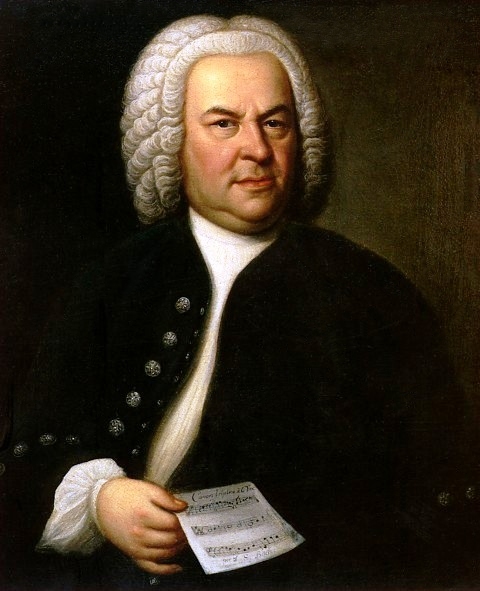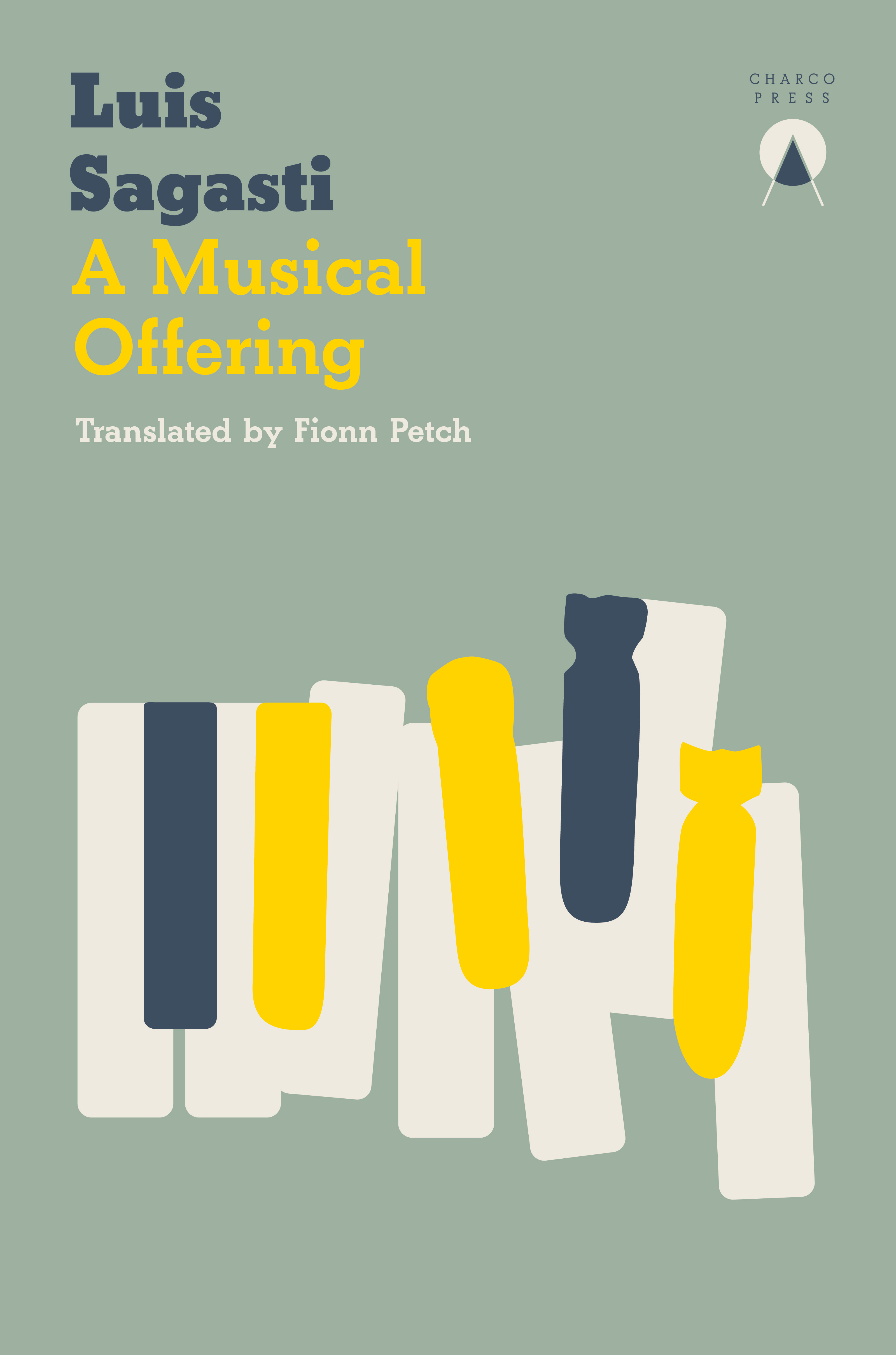Luis Sagasti: A Musical Offering review – the sounds of silence | reviews, news & interviews
Luis Sagasti: A Musical Offering review – the sounds of silence
Luis Sagasti: A Musical Offering review – the sounds of silence
A bewitching suite of stories about music, heard and unheard

Luis Sagasti attends closely to the silence that precedes, pauses, and follows music in this mesmeric collage of stories inspired by the sounds that humans – and animals, and stars – create. Like many authors before him, the Argentinian novelist and curator is also a bit obsessed by Bach’s Goldberg Variations, especially as played by the maverick Canadian genius Glenn Gould. Well, Luis – snap.
This isn’t quite a novel, and it isn’t quite an essay. Still, Sagasti’s compact (120 pages) but densely textured mosaic of musical stories do trace a kind of narrative arc. They repeat and then transform the same essential motifs: silence, circularity, sleep, the quest for some heavenly or absolute music, and – insistently – music’s role in grief, in war, in the natural world, in birth and death, as lullaby or elegy. Naturally, the form serves to amplify the theme. If you seek a musical analogy for the shuffle of juxtaposed ideas, images and tales that drives A Musical Offering, perhaps it’s more like a wild contrapuntal fantasia, Lizst-fashion, than a strict Bachian progress through every mutation of some basic speck of harmonic DNA. Sagasti seems to agree with the words of Schubert’s An die Musik (though he doesn’t cite them – too clichéd, maybe?) in finding that organised sounds show us Den Himmel bessrer Zeiten, a heaven of happier times. He does suggest that “Perhaps all the songs in the world have a happy ending”, and that music tells “a story with no baddies… Like the thought process of a galaxy”.
 Between those Glenn Gould, and Goldberg Variations, bookends, his narrative cells take in stories about Bach himself (pictured left by Elias Haussmann), Messiaen, the Beatles, Scriabin, Beethoven, Pete Townshend, John Cage, Brahms, Stockhausen, the Rolling Stones, and a dozen others. Some are well-known: Paul McCartney dreaming Yesterday, convinced that someone else wrote the melody, and finally playing this gift from the mystic music of the spheres “Like handing something in to the police”. Some strain credibility (you could, after all, read this book purely as fiction), like the pioneer harpsichord revivalist Wanda Landowska hauling her instrument through Russian snowdrifts to play for grumpy old Count Tolstoy in 1919 (er… he died in 1910). But guess what? Landowska did play for Tolstoy, three times rather than twice, as Sagasti says, only she did so a decade earlier. However, I’m pretty sure that Borges (a palpable presence here) would have relished the yarn about the great organ of Himmelheim whose mammoth pipes provoked an avalanche that buried the Alpine town.
Between those Glenn Gould, and Goldberg Variations, bookends, his narrative cells take in stories about Bach himself (pictured left by Elias Haussmann), Messiaen, the Beatles, Scriabin, Beethoven, Pete Townshend, John Cage, Brahms, Stockhausen, the Rolling Stones, and a dozen others. Some are well-known: Paul McCartney dreaming Yesterday, convinced that someone else wrote the melody, and finally playing this gift from the mystic music of the spheres “Like handing something in to the police”. Some strain credibility (you could, after all, read this book purely as fiction), like the pioneer harpsichord revivalist Wanda Landowska hauling her instrument through Russian snowdrifts to play for grumpy old Count Tolstoy in 1919 (er… he died in 1910). But guess what? Landowska did play for Tolstoy, three times rather than twice, as Sagasti says, only she did so a decade earlier. However, I’m pretty sure that Borges (a palpable presence here) would have relished the yarn about the great organ of Himmelheim whose mammoth pipes provoked an avalanche that buried the Alpine town.
The music found within silence or within nature, Keats’s unheard melodies, haunt the book. Pre-Who, young Pete Townshend endures a miserable trip with the Sea Scouts but hears the ambient marine sounds as “countless threads of an angelic choir”. Scriabin imagines a supreme, epoch-changing work, Mysterium, to be performed in the Himalayas in a spirit of “overwhelming ecstasy” and ushered in by “a pealing of bells hung from the clouds themselves”. Messiaen listens to birdsong, which he called “the best music in the world”, and channels it into compositions that defy loneliness, conflict, imprisonment, in order to “do away with” human time. Haunted by the deaths of children, his own daughter among them, Mahler lets the Ninth Symphony drift away into darkness and silence, with a violin lullaby “that stretches out into the unsayable”. Inevitably, Sagasti seizes on the span of ambient sound invoked by John Cage during the silence of the pianist in his famous/notorious noteless opus 4’ 33’’. He doesn’t mention that Stravinsky, outflanked by the avant-garde, retorted by saying that he looked forward to longer works by Cage-ites in the same style.
 Sagasti’s variations carry us from the birds to the stars, and from lullaby-rocked cradle to lament-blessed grave. Music’s role as resistance or consolation in wartime recurs: “Musicians are essential when death is imminent,” he writes. However, once or twice the episodes that invoke a soundtrack for besieged Leningrad, for Berlin on the brink of Hitler’s downfall, or for starving inmates in Auschwitz, edge as close to kitsch (to my ears, anyway) as this normally pitch-perfect writer comes. A few false notes, and A Musical Offering might easily begin to sound pompous, silly, or both. In Fionn Petch’s finely phrased translation, though, both the ground bass of Sagasti’s core motifs and the flamboyant passagework that adorns them consistently ring true. You read its fugitive harmonies, its tantalising discords, and imagine the music that it summons, and much more. You think, just as much, about the music that we (like Count Keyserling as he drifted off to the Goldbergs) are fated never to hear. Legend has it that, while rehearsing, the Rolling Stones play a secret song, unrecorded, an unknown Jagger-Richards classic – “Beautiful melody, very simple harmonies, a devastating riff”. Familiarity has not unwrapped this mythic ditty’s “chrysalis of wonder”. We’ll never listen to it, any more than to the “secret chord” struck by David that pleases the Lord in Leonard Cohen’s Hallelujah. In these silent spaces around music, Sagasti’s words can bloom.
Sagasti’s variations carry us from the birds to the stars, and from lullaby-rocked cradle to lament-blessed grave. Music’s role as resistance or consolation in wartime recurs: “Musicians are essential when death is imminent,” he writes. However, once or twice the episodes that invoke a soundtrack for besieged Leningrad, for Berlin on the brink of Hitler’s downfall, or for starving inmates in Auschwitz, edge as close to kitsch (to my ears, anyway) as this normally pitch-perfect writer comes. A few false notes, and A Musical Offering might easily begin to sound pompous, silly, or both. In Fionn Petch’s finely phrased translation, though, both the ground bass of Sagasti’s core motifs and the flamboyant passagework that adorns them consistently ring true. You read its fugitive harmonies, its tantalising discords, and imagine the music that it summons, and much more. You think, just as much, about the music that we (like Count Keyserling as he drifted off to the Goldbergs) are fated never to hear. Legend has it that, while rehearsing, the Rolling Stones play a secret song, unrecorded, an unknown Jagger-Richards classic – “Beautiful melody, very simple harmonies, a devastating riff”. Familiarity has not unwrapped this mythic ditty’s “chrysalis of wonder”. We’ll never listen to it, any more than to the “secret chord” struck by David that pleases the Lord in Leonard Cohen’s Hallelujah. In these silent spaces around music, Sagasti’s words can bloom.
- A Musical Offering by Luis Sagasti, translated by Fionn Petch (Charco Press, £8.99)
The future of Arts Journalism
You can stop theartsdesk.com closing!
We urgently need financing to survive. Our fundraising drive has thus far raised £49,000 but we need to reach £100,000 or we will be forced to close. Please contribute here: https://gofund.me/c3f6033d
And if you can forward this information to anyone who might assist, we’d be grateful.

Subscribe to theartsdesk.com
Thank you for continuing to read our work on theartsdesk.com. For unlimited access to every article in its entirety, including our archive of more than 15,000 pieces, we're asking for £5 per month or £40 per year. We feel it's a very good deal, and hope you do too.
To take a subscription now simply click here.
And if you're looking for that extra gift for a friend or family member, why not treat them to a theartsdesk.com gift subscription?
more Books
 'We are bowled over!' Thank you for your messages of love and support
Much-appreciated words of commendation from readers and the cultural community
'We are bowled over!' Thank you for your messages of love and support
Much-appreciated words of commendation from readers and the cultural community
 Natalia Ginzburg: The City and the House review - a dying art
Dick Davis renders this analogue love-letter in polyphonic English
Natalia Ginzburg: The City and the House review - a dying art
Dick Davis renders this analogue love-letter in polyphonic English
 Tom Raworth: Cancer review - truthfulness
A 'lost' book reconfirms Raworth’s legacy as one of the great lyric poets
Tom Raworth: Cancer review - truthfulness
A 'lost' book reconfirms Raworth’s legacy as one of the great lyric poets
 Ian Leslie: John and Paul - A Love Story in Songs review - help!
Ian Leslie loses himself in amateur psychology, and fatally misreads The Beatles
Ian Leslie: John and Paul - A Love Story in Songs review - help!
Ian Leslie loses himself in amateur psychology, and fatally misreads The Beatles
 Samuel Arbesman: The Magic of Code review - the spark ages
A wide-eyed take on our digital world can’t quite dispel the dangers
Samuel Arbesman: The Magic of Code review - the spark ages
A wide-eyed take on our digital world can’t quite dispel the dangers
 Zsuzsanna Gahse: Mountainish review - seeking refuge
Notes on danger and dialogue in the shadow of the Swiss Alps
Zsuzsanna Gahse: Mountainish review - seeking refuge
Notes on danger and dialogue in the shadow of the Swiss Alps
 Patrick McGilligan: Woody Allen - A Travesty of a Mockery of a Sham review - New York stories
Fair-minded Woody Allen biography covers all bases
Patrick McGilligan: Woody Allen - A Travesty of a Mockery of a Sham review - New York stories
Fair-minded Woody Allen biography covers all bases
 Howard Amos: Russia Starts Here review - East meets West, via the Pskov region
A journalist looks beyond borders in this searching account of the Russian mind
Howard Amos: Russia Starts Here review - East meets West, via the Pskov region
A journalist looks beyond borders in this searching account of the Russian mind
 Henry Gee: The Decline and Fall of the Human Empire - Why Our Species is on the Edge of Extinction review - survival instincts
A science writer looks to the stars for a way to dodge our impending doom
Henry Gee: The Decline and Fall of the Human Empire - Why Our Species is on the Edge of Extinction review - survival instincts
A science writer looks to the stars for a way to dodge our impending doom
 Jonathan Buckley: One Boat review - a shore thing
Buckley’s 13th novel is a powerful reflection on intimacy and grief
Jonathan Buckley: One Boat review - a shore thing
Buckley’s 13th novel is a powerful reflection on intimacy and grief
 Help to give theartsdesk a future!
Support our GoFundMe appeal
Help to give theartsdesk a future!
Support our GoFundMe appeal
 Jessica Duchen: Myra Hess - National Treasure review - well-told life of a pioneering musician
Biography of the groundbreaking British pianist who was a hero of the Blitz
Jessica Duchen: Myra Hess - National Treasure review - well-told life of a pioneering musician
Biography of the groundbreaking British pianist who was a hero of the Blitz

Add comment